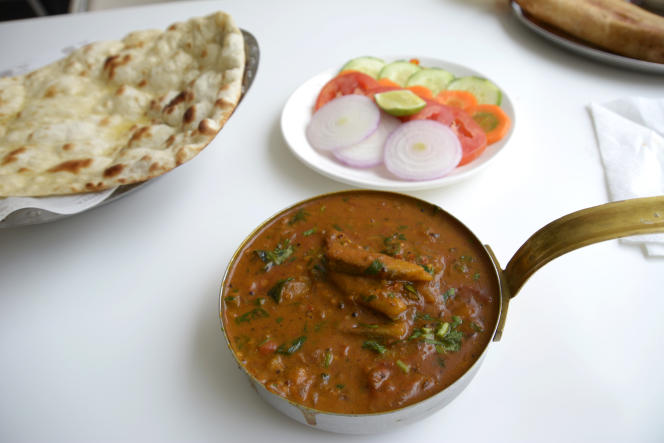It is distinguished on Kenyan market stalls by its green color and chubby shape. Thick, picked before ripening, the matoke banana looks a lot like its cousin, the plantain. But the local variety, fruit of “East African highland bananas”has its roots in the tropical highlands of the Great Lakes region.
Matoke, or matooke, is right at home in Uganda, the world’s second largest banana producer after India. Here, it is consumed daily by 75% of the population. It is the staple food for 30 million people between Uganda, Tanzania and Kenya, bringing the number of consumers on the continent to 100 million. So much so that in Kampala, the word has become synonymous with food.
Steamed or boiled, sliced or whole, there are a thousand ways to cook this strongly starched and tasteless banana. It is generally cut up, cooked in banana leaves, mashed or served in a stew to become the famous matoke.
“It’s a comfort dish, family, that our grandmothers prepared for us during our childhood, we consumed it at homesays Chanya Mwanyota, a young Kenyan entrepreneur. But with the new urban lifestyles, people decide to taste it on the go »explains the one who launched in Nairobi, the Kenyan capital, Grandma Ruks, a home delivery service of local gastronomy during the Covid-19 pandemic.
“It’s a hit, because it’s a local dish, inexpensive and that you can accompany with just about anything”, she adds. On its menu, the options are legion: garnished with fish, beef or chapatis. All for 450 shillings (3 euros). A price that is not within the reach of all budgets in a Kenya subject to inflation, where day laborers prefer to taste it in a hurry, and for a third of the price, in one of the many kibandaroadside eateries.
“Vegan and gluten-free”
In recent years, the green banana has experienced a comeback among the Kenyan middle class thanks to the injunctions to eat well and eat locally. In Kenya, a study by the Ministry of Health shows that 45% of women aged 20 to 49 are overweight or obese. “We have sometimes forgotten in Africa to cook healthy dishes”says Paulino Awino, a Kenyan chef based in the United States.
“Because our countries have experienced rapid development, the new affluent class in the cities wanted to copy Western habits of fast food and fried food”, she says. Today, the green banana is getting its revenge and even appearing on the menus of fancy restaurants in Nairobi.
In her latest cookbook Africa Eats: Traditional & Ancient Foods for the Modern KitchenPauline Awino gives pride of place to matoke, which she describes as a dish ” tendency “, “full of protein, vegan and gluten-free”. In fact, it is rich in vitamin B, vitamin C, potassium and fiber, and illustrates its slogan: “The greatest wealth is health! »
“People realize that Western food is prestigious, but our native dishes are better, often easier and cheaper to prepare”insists the chef, born in Nairobi and whose family comes from the town of Kisumu, near the Ugandan border, in a region where green banana plantations thrive.
Although sold everywhere, the matoke banana is most common in western Kenya. “As soon as someone comes back from Kisumu, I ask them to bring me some kilos, it’s very special for me”, she admits from her American culinary exile. If she describes, in her book, the traditional East African recipe for matoke, stewed with beef, her secret touch is to drown the banana in a peanut sauce. A “delight”which Pauline Awino abused during the Covid-19 pandemic, when she made her own “back to local foods”.
Summary of our series “Africa goes to the table”
There are internationally recognized stars, such as couscous, of which we will refrain from saying which of the Maghreb countries is the best ambassador. There are also those who are beginning to gain notoriety, such as thiéboudiène or chicken yassa, which are the pride of Senegal. And finally there are those that remain insider’s delights, such as the garba in Côte d’Ivoire or the ndolé in Cameroon.
The World Africa takes you this week to discover some of the thousand and one flavors of the African continent, its emblematic dishes, which too often remain pleasures of the countries where they were born.
